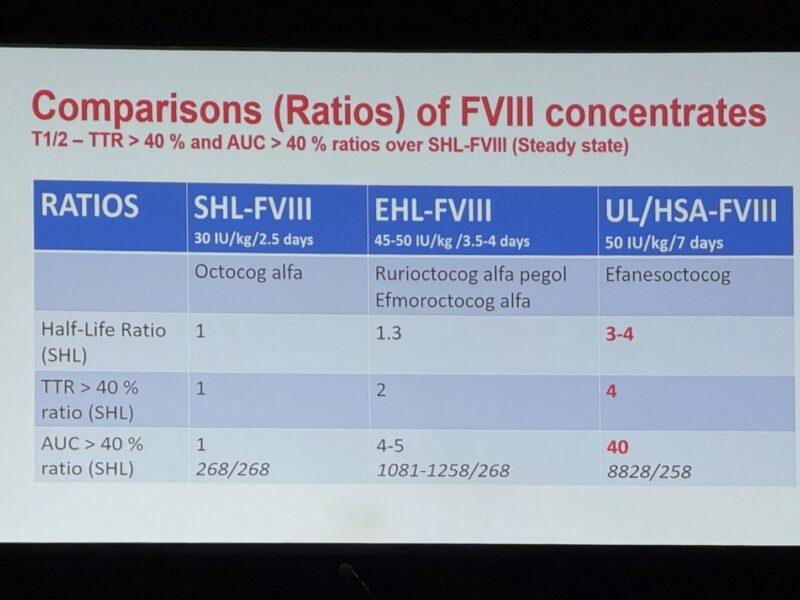
Transforming FVIII Product Classification: AUC and TTR as Game-Changing Metrics for Next-Generation Hemophilia A Therapy
Wolfgang Miesbach, Professor of Medicine at Frankfurt University Hospital, has recently shared a very informative post on X:
‘‘Novel FVIII Classification: Scientific Framework for Next-Generation Haemophilia Treatment. Two pharmacokinetic metrics that can redefine how we classify Factor VIII products, presented by Professor Cedric Hermans at ISTH SSC FVIII/FIX session.
The Scientific Challenge
Traditional “standard” vs “extended” half-life classifications have proven inadequate for new generation FVIII products. Recent advances have led to improved ability to maintain FVIII levels within normal range.
New Classification Metrics
– Area Under the Curve (AUC) > 40%
Measures total drug exposure over time, providing comprehensive assessment of sustained FVIII activity rather than peak-focused measurements
– Time in Target Range (TTR) > 40%
Evaluates percentage of time patients maintain therapeutically effective FVIII levels, offering crucial insights into sustained haemostatic protection
Comparative Performance Data
– Standard Half-Life (SHL-FVIII): Baseline comparators (AUC ratio: 1, TTR ratio: 1)
– Extended Half-Life (EHL-FVIII): 4-5x AUC improvement, 2x TTR enhancement
– Ultra-Long/High Sustained Activity (UL/HSA-FVIII): 40x AUC improvement, 4x TTR boost
Products like efanesoctocog alfa demonstrate remarkable sustained activity, maintaining mean FVIII levels >40 IU/dL for 4 days with geometric mean half-life of 43.3 hours
Future Integration
Further validation can be warranted for integration into routine clinical evaluation and PK tools like WAPPS-Hemo, MyPKFit, and Florio. These platforms enable Bayesian forecasting of individual PK profiles for personalized treatment optimization.
As the field evolves toward normal hemostasis as the treatment goal, these metrics provide an important scientific basis for evaluating innovative therapies.”

Stay updated with Hemostasis Today.
-
Nov 27, 2025, 16:00Nathan Connell on WFH AI Summaries from the Global Forum
-
Nov 27, 2025, 15:49Piotr Czempik: Rethinking Coagulation in Acute Liver Dysfunction
-
Nov 27, 2025, 15:35Overwhelmed? A Leader’s Guide from Mark Crowther to Getting Back on Track
-
Nov 27, 2025, 15:10Wolfgang Miesbach’s Top 10 Picks for TTP and Thrombosis from ASH 2025
-
Nov 27, 2025, 14:24ICCBBA’s Executive Director Eoin McGrath Chairs a Dynamic Session on AI, Innovation and Informatics in Transfusion Medicine
-
Nov 27, 2025, 13:26Wolfgang Miesbach’s Top 10 Picks for Bleeding Disorders from ASH 2025
-
Nov 27, 2025, 11:19Priya Prasad Presents a Case of Severe Hypotensive Transfusion Reaction
-
Nov 27, 2025, 04:07Eugene Tang Presents Highlights from UK Stroke Forum 2025
-
Nov 27, 2025, 03:47Michael Makris: I Believe the Time Has Come to Consider Emicizumab Up Front in Persons with Acquired Hemophilia
